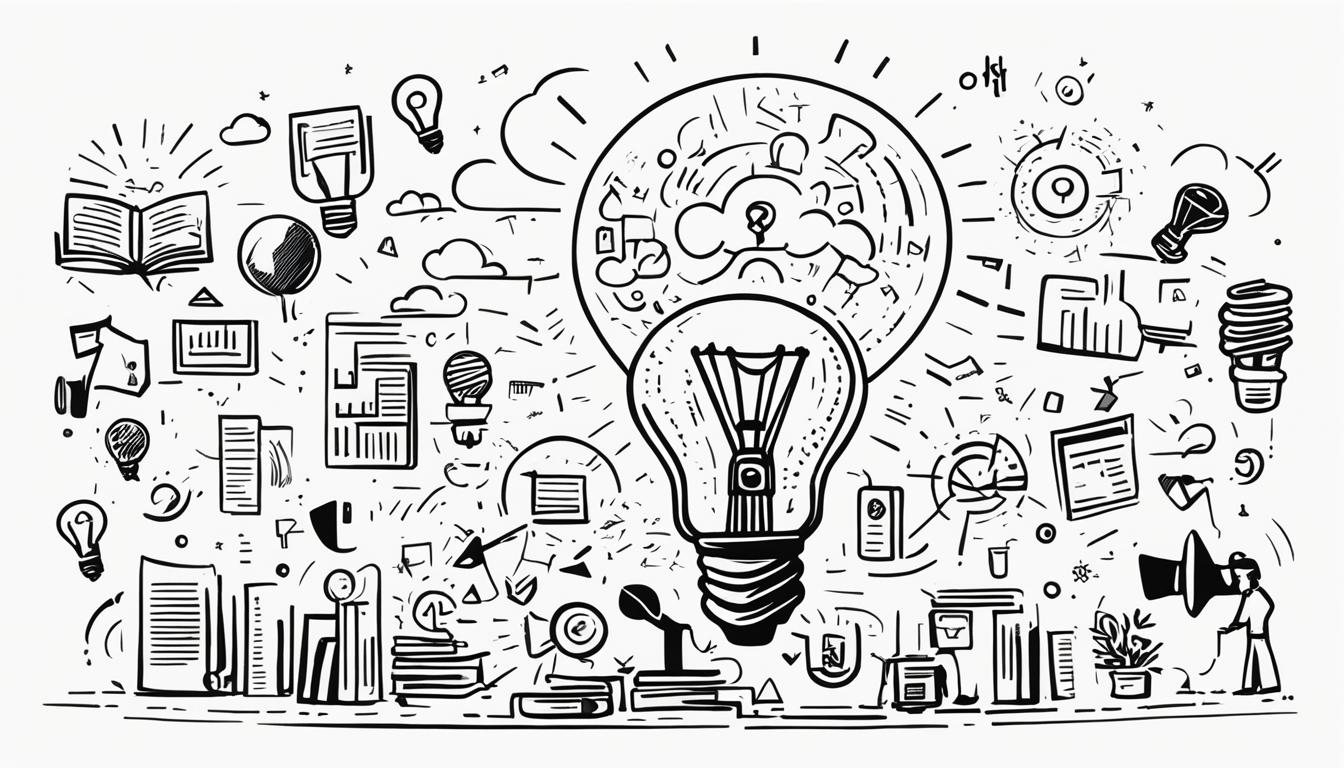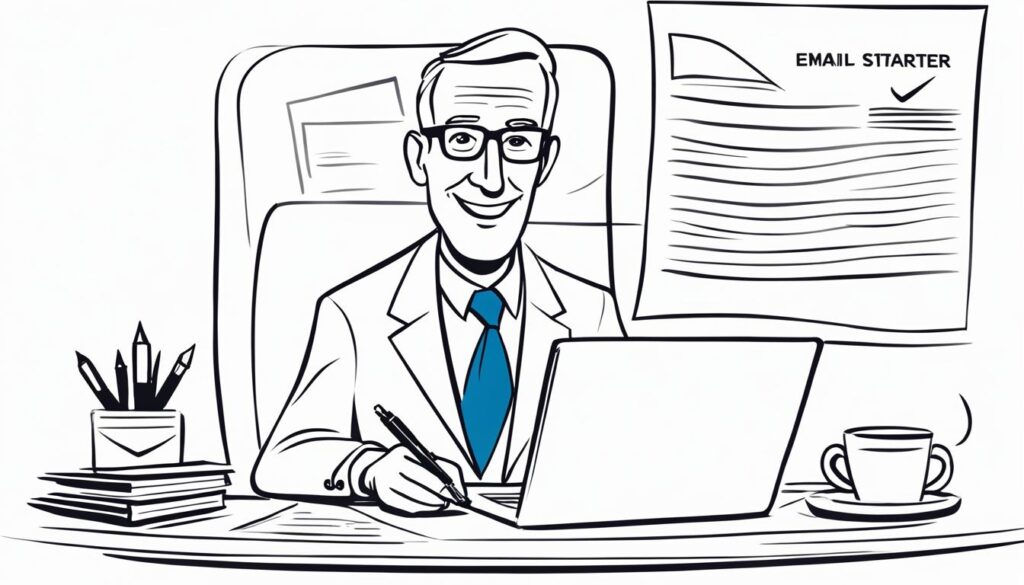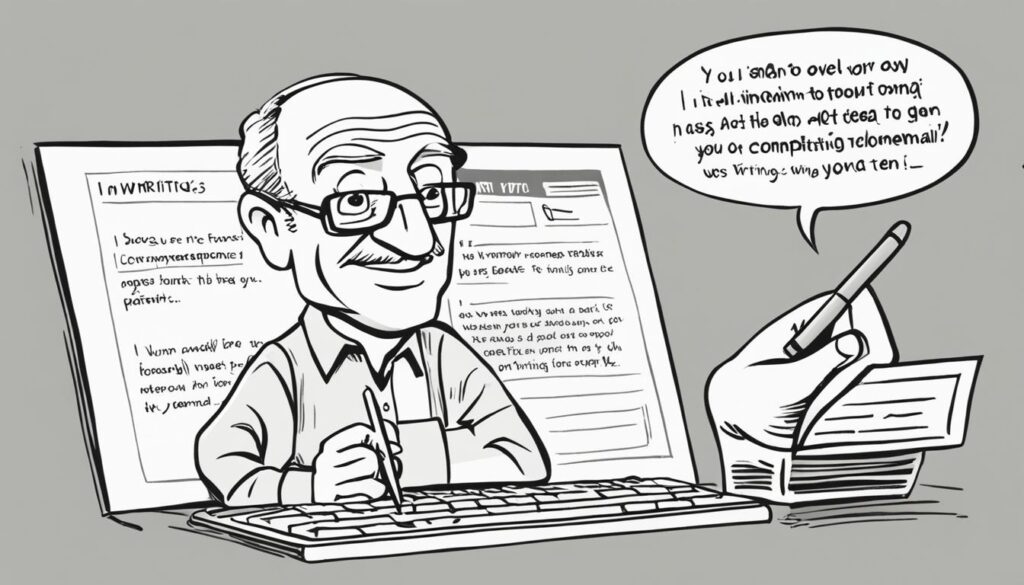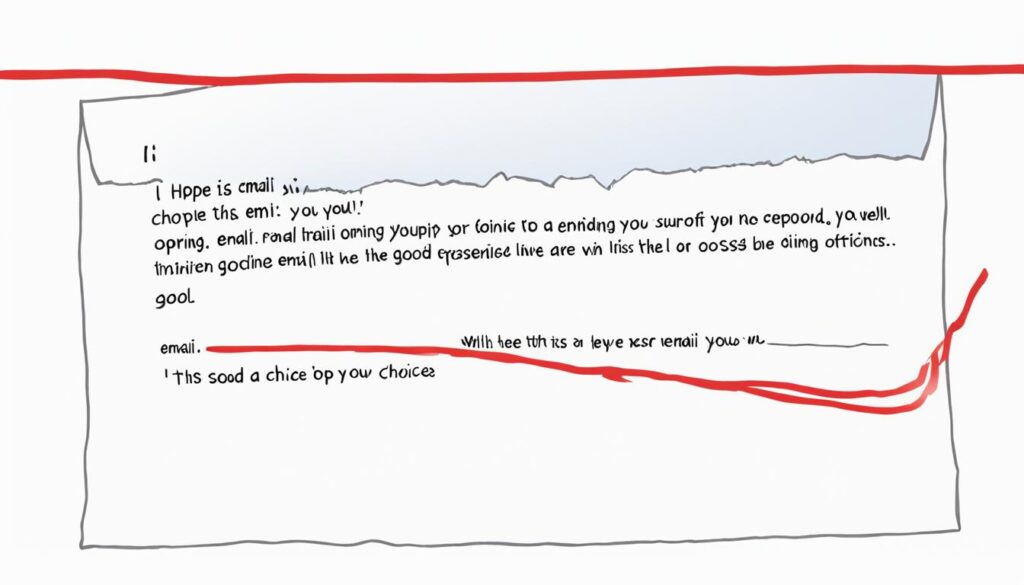When it comes to starting an email, the phrase “I am writing to inform you” may feel dull and uninspiring. If you’re looking for creative ways to captivate your recipient and effectively convey your message, you’re in the right place. In this article, we will explore various alternatives and synonyms for this common phrase, providing you with a repertoire of engaging opening lines for your informative emails.
Instead of resorting to the cliché phrase, why not embrace the power of language and select a more captivating introduction? By choosing alternative expressions, you can make a memorable first impression and establish a connection with your recipient from the very beginning.
It’s important to adapt your opening line to the specific context and tone of your email. Whether you want to convey urgency, excitement, or a sense of importance, there are numerous phrases that can help you achieve your goal. Let’s explore some creative alternatives and synonyms that will make your informative emails more engaging and effective.
Key Takeaways:
- Starting an email with an informative opening is crucial for creating a positive impression.
- Using alternative phrases and synonyms can make your email more engaging and memorable.
- Adapt your opening line to the specific context and tone of your email.
- Choose expressions that convey urgency, excitement, or importance to captivate your recipient.
- Make a memorable first impression by selecting a creative and captivating introduction.
Best Email Salutations
In the world of email communication, finding the right salutation is crucial. It sets the tone for your message and establishes a connection with your recipient. Whether you’re crafting a formal email or a more informal one, choosing an appropriate greeting is essential. Here are some of the best email salutations for various situations:
1. Professional Email Greetings:
| Salutation | Usage |
|---|---|
| Dear [Recipient’s Name] | The most common and professional greeting for formal emails. |
| Hello [Recipient’s Name], | A friendly and professional greeting suitable for most situations. |
| Good morning/afternoon, | A polite and respectful way to start the email when you don’t know the recipient’s name. |
2. Informal Email Greetings:
| Salutation | Usage |
|---|---|
| Hi [Recipient’s Name], | An informal and friendly greeting commonly used among colleagues or acquaintances. |
| Hey [Recipient’s Name], | An even more casual greeting suitable for very informal situations. |
| Greetings, | A versatile and friendly opening that works well in most informal contexts. |
Remember, the salutation you choose should match the tone and context of your email. Consider your relationship with the recipient and the level of formality required. By starting your email with an appropriate greeting, you’ll create a positive and engaging first impression.
Professional Email Starters
In the realm of professional communication, crafting an impactful email starts with a polite and warm introduction. It is essential to establish a friendly and respectful tone that captivates the recipient’s attention while introducing the core content of your message concisely. By utilizing these professional email starters, you can elevate your email communication and make a lasting impression.
“Politeness is the oil of conversation.” – Edward George Bulwer-Lytton
When initiating a professional email, consider beginning with a statement of goodwill, expressing genuine interest and appreciation. This not only sets a positive tone but also demonstrates your respect for the recipient’s valuable time. Let’s explore a few examples of polite email openings:
| Email Starter | Situation |
|---|---|
| “I hope this email finds you well.” | When you want to convey good wishes and care |
| “Thank you for taking the time to read my email.” | When expressing gratitude for the recipient’s attention |
| “I trust this email finds you amidst a productive day.” | When acknowledging the recipient’s work ethic |
| “I appreciate your prompt response in advance.” | When requesting a timely reply |
Polishing Your Professional Email Starters
To further enhance your professional email starters, consider incorporating concise phrases that introduce the core content of your message. This helps your recipient understand the purpose of your email from the outset, providing clarity and ensuring that your message is effectively communicated. Here are some examples of concise email introductions:
- “I am reaching out to discuss the upcoming project deadline.”
- “I wanted to share the latest updates on our marketing campaign.”
- “I’m writing to request an extension for the proposal submission.”
- “I wanted to inform you about the upcoming team meeting.”
Remember, the goal of a professional email is to convey your message clearly and respectfully while ensuring a positive and productive conversation. By employing these polite email openings and concise introductions, you establish a strong foundation for effective communication and foster a positive rapport with your recipients.
Informal Email Examples
When communicating with colleagues or individuals with whom you share a personal connection, incorporating an informal touch into your email greetings can help foster a warm and friendly tone. Adding a dash of humor, when appropriate, can further enhance the email opener and create a positive impression. However, it’s important to exercise caution and ensure that the humor remains appropriate and aligns with the professional environment. Here are some informal email examples that strike the right balance of personal touch and workplace appropriateness:
-
Hey [Colleague’s Name],
I hope this email finds you well and enjoying your day! I wanted to touch base regarding [specific project/task]. Let’s catch up over a cup of coffee soon to discuss further.
Looking forward to chatting with you!
-
Hi [Friend’s Name],
I have some exciting news to share with you! [Insert news or update]. I couldn’t wait to tell you all about it. Let’s plan a lunch date soon to celebrate!
Take care and talk soon!
-
Hey [Colleague’s Name],
Why did the developer go broke?
Because he lost his domain!
Now that I’ve got your attention with a bad joke, let’s discuss the upcoming team meeting. Do you have any agenda items you’d like to add?
Looking forward to your input!
The above examples demonstrate how informal email greetings can create a personal connection and inject a touch of humor into your communication. Remember, appropriateness and professionalism should always be at the forefront of your mind when deciding on the tone and content of your email.
How to Start an Email Response
When it comes to responding to an email, the way you address the recipient sets the tone for the entire conversation. It’s important to take into consideration how the person signed off in their previous message and choose a suitable opening for your response.
Addressing a reply appropriately shows respect and professionalism. If the person used a formal greeting such as “Dear Mr. Smith,” it is best to mirror their formality. Respond with something like:
Dear Mr. Smith,
This ensures that you maintain a consistent level of formality and professionalism in your email exchanges. On the other hand, if the person used a more informal greeting, such as “Hi Jane,” you can respond in a similar manner:
Hi Jane,
This approach helps establish a friendly rapport and keeps the conversation casual when appropriate.
In addition to addressing the recipient, expressing appreciation in your email responses is also essential. Taking the time to thank the person for their help, update, or quick response shows gratitude and strengthens the relationship. Use phrases like:
Thank you for your prompt response. I appreciate your assistance.
By showing your gratitude, you acknowledge the value of their input and ensure a positive tone throughout the conversation.
Remember, starting an email response with the right address and expressing appreciation lays the foundation for a productive and respectful conversation.
Example:
Let’s take a look at an email response that incorporates these techniques:
Hi Emily,
Thank you for your quick response. I really appreciate the information you provided.
Best regards,
John
| Scenario | Email Opening | Appreciation Statement |
|---|---|---|
| Formal Greeting | Dear Mr. Smith, | Thank you for your prompt response. I appreciate your assistance. |
| Informal Greeting | Hi Jane, | Thanks for getting back to me so quickly. I really appreciate it. |
Professional Openings for Follow-Up Emails
When reaching out to someone for the second time, it’s crucial to have a professional opening that acknowledges our previous communication. This opening should set the stage for the new information or request we have, whether we’re checking in on a previous conversation or providing an update. By using these professional openings, we can establish a strong foundation for our follow-up email and increase the likelihood of receiving a timely response.
“Dear [Recipient’s Name],
I hope this email finds you well. I wanted to follow up on our previous conversation regarding [subject]. Since our last communication, [provide a short summary of any important updates or changes]. I’m reaching out today to [state the purpose of the follow-up email, whether it’s to request additional information, provide new details, or simply check in on the progress].
If you have any questions or need further clarification, please don’t hesitate to reach out. I appreciate your time and attention to this matter. Thank you in advance for your prompt response.
Best regards,
[Your Name]”
Using this opening, we demonstrate professionalism and consideration for the recipient’s time. By acknowledging our previous communication and providing a clear purpose for our follow-up, we establish a solid foundation for effective email communication.
| Opening Phrase | Situation/Context |
|---|---|
| “I hope this email finds you well.” | When you want to start with a polite and friendly greeting. |
| “Following up on our previous conversation regarding [subject].” | When you need to reference a specific topic from a previous conversation. |
| “Since we last spoke, [provide a short summary of any important updates or changes].” | When there have been developments or updates since your last communication. |
| “I wanted to check in on [specific task or project] and provide any necessary updates.” | When you want to check the progress of a task or project and offer any relevant information. |
| “I would greatly appreciate an update on [specific topic/task].” | When you need to request an update on a specific topic or task. |
These opening phrases can be tailored to suit your specific situation and desired tone. By using these professional openings, you can make a strong impression in your follow-up emails and effectively convey your message.
5 Strong Greetings (Salutations)
Choosing the right email greeting is a powerful way to make a lasting impression and establish the perfect tone for your message. Whether you’re aiming for a formal approach or a more personalized touch, the greeting you select sets the stage for the entire email. Here are five strong greetings that suit various situations and help you begin your emails with confidence:
1. Appropriate Salutations
Starting an email with a formal salutation is ideal when addressing someone you have a professional relationship with. It signifies respect and sets a serious tone for your communication. A classic and timeless option is:
Dear [Recipient’s Name],
2. Formal Greetings
To create a professional yet approachable tone, consider using a slightly less formal greeting that still conveys respect and politeness. An effective option is:
Good [Morning/Afternoon/Evening] [Recipient’s Name],
3. Personalized Greetings
To show that your email is tailored specifically to the recipient, a personalized greeting can make a significant impact. This form of greeting makes the recipient feel valued and acknowledged. Try using:
Hi [Recipient’s Name],
4. Generic Greetings
When sending an email to a larger audience or a group of recipients, a more generic greeting can be appropriate. This avoids the need for individual names and addresses everyone collectively. A suitable choice is:
Dear Team/All,
5. Formal Greetings with a Personal Touch
For a formal greeting with a touch of personalization, this option helps you foster a professional connection while adding a warm and friendly touch:
Dear [Recipient’s Name],
I hope this email finds you well.
Implementing these strong email greetings will help you establish a positive tone from the very beginning and encourage meaningful and effective communication.
5 Good Opening Lines
As I sit down to compose an email, I am well aware of the impact that the opening line can have on capturing the attention of the recipient. It serves as the gateway to the rest of the message, making it crucial to create an engaging and rapport-building introduction. Here are five carefully crafted opening lines that are sure to grab attention and leave a lasting impression:
- “I hope this email finds you well, ready to embark on an exciting journey together.”
- “In the realm of possibility, may this email serve as the catalyst for our shared success.”
- “With heartfelt enthusiasm, I write to you, eager to explore new horizons.”
- “Let’s embark on a collaborative adventure, where our ideas intertwine and greatness unfolds.”
- “As the sun rises, so does my anticipation to connect with you and make remarkable strides.”
Each of these opening lines exudes a sense of excitement, invites collaboration, and establishes a friendly atmosphere. By incorporating these attention-grabbing email openers, you can build rapport from the start and ensure that your message resonates with the recipient. Remember, a well-crafted opening line sets the stage for a meaningful conversation.
How Not to Start an Email
While crafting the perfect email opener can be a daunting task, it is equally important to be aware of some common mistakes you should avoid. These pitfalls can undermine the effectiveness of your email and leave a negative impression on the recipient. In this section, I will discuss the most common email opening mistakes, including impersonal greetings, omitting greetings altogether, and including redundant openings.
“Impersonal Greetings.”
One of the most significant mistakes you can make when starting an email is using impersonal greetings. Emails should always strive to create a personal connection with the recipient, even in professional settings. Avoid using generic greetings such as “To whom it may concern” or “Dear Sir/Madam.” Instead, make an effort to address the recipient by their name, as this adds a personal touch and shows that you value their individuality.
“No Greeting at All.”
Another common misstep is omitting a greeting altogether. While it may be tempting to dive straight into the main content of your email, it’s essential to begin with a proper salutation. By neglecting a greeting, you risk coming across as abrupt or rude. Take a moment to address the recipient respectfully, even if it’s a brief opening. This small gesture sets a positive tone for the entire email conversation.
“Redundant Openings.”
Redundancy can also be a hindrance when starting an email. While it’s crucial to establish context and provide necessary information, excessive or repetitive introductions can be tiresome for the recipient. Avoid lengthy explanations or unnecessary summaries that only serve to prolong the email unnecessarily. Ensure that your opening is concise, relevant, and directly addresses the purpose of your email.
The Importance of a Strong Email Opener
A strong email opener sets the tone for the entire message and can significantly impact how it is received. By avoiding these common email opening mistakes, you will improve your chances of grabbing the recipient’s attention, establishing a personal connection, and effectively conveying your message. Remember, a thoughtful and engaging email opener is the key to successful communication.
It is important to keep these tips in mind when composing your emails to ensure that you make a positive impression right from the start. By using personalized greetings, including appropriate salutations, and avoiding redundant openings, you can create a compelling email opener that captures the recipient’s attention and sets the stage for a successful conversation.
Now, let’s move on to the next section where I will provide you with some strong email greetings that you can use to make an impactful first impression.
Conclusion
Starting an email with an informative opening is an art that holds immense importance in creating a lasting impression and effectively getting your message across. By utilizing alternative phrases and employing creative email starters, you have the power to captivate your recipient’s attention from the very beginning, establishing a genuine connection. It’s crucial to understand that a strong email opener sets the tone for the entire email and can greatly influence how your message is perceived.
Throughout this article, we have explored various techniques and examples to enhance your email communication skills. We’ve learned that there are numerous ways to say “I am writing to inform you,” and by choosing from these alternatives, you can make a memorable impact. Additionally, we have delved into the significance of professional email salutations, appropriate openings for different contexts, how to respond to emails graciously, and the art of follow-up emails.
By incorporating the key points covered in this article, you can elevate your email communication to new heights. Remember, a strong email opener exhibits your professionalism and paves the way for effective communication. Craft your opening lines with care, utilizing the knowledge acquired, and observe the significant influence it has on engaging your recipients and achieving your desired outcomes. Capitalize on this valuable skill to improve your overall email communication and foster stronger connections.
FAQ
What are some alternatives to ‘I am writing to inform you’?
There are several alternative phrases you can use to start an email, such as ‘I wanted to update you on…’, ‘I’m reaching out to let you know…’, ‘I have some important news to share…’, or ‘I thought you should be aware that…’
Are there different ways to say ‘I am writing to inform you’?
Yes, instead of using the same phrase, you can try variations like ‘I would like to notify you that…’, ‘I wanted to bring to your attention…’, ‘I am sharing this information with you…’, or ‘I felt it was important to let you know…’
What are some other ways to express ‘I am writing to inform you’?
You can try different expressions like ‘This email is to let you know…’, ‘Just a quick note to update you on…’, ‘I thought I should inform you that…’, or ‘It’s important for me to share with you…’
Can you provide me with synonyms for ‘I am writing to inform you’?
Certainly! Some synonyms include ‘I am contacting you to advise that…’, ‘I am sharing with you the information that…’, ‘This message serves to alert you that…’, or ‘I am forwarding you this message to inform you…’
What are some phrases to replace ‘I am writing to inform you’?
You can try using phrases like ‘I need to bring to your attention that…’, ‘I wanted to give you a heads up that…’, ‘I wanted to let you know that…’, or ‘I have something important to tell you…’
Can you provide some examples of creative ways to start an informative email?
Certainly! You can start with phrases like ‘I have exciting news to share with you…’, ‘You’ll be interested to know that…’, ‘I wanted to give you an update on…’, or ‘I thought you’d like to be informed that…’
What are some effective opening lines for informing recipients?
Here are some examples of effective opening lines: ‘I wanted to make sure you’re aware that…’, ‘I discovered something that might interest you…’, ‘I have some important information for you regarding…’, or ‘I thought you should know that…’
What are some suitable email greetings for professional emails?
Some suitable email greetings for professional emails include ‘Dear [Recipient’s Name]’, ‘Hello [Recipient’s Name]’, ‘Good morning/afternoon’, or ‘Greetings [Recipient’s Name]’.
Can you provide examples of polite statements of goodwill to start a professional email?
Certainly! Some examples are ‘I hope this email finds you well’, ‘I trust you are having a productive week’, ‘I wanted to start by expressing my appreciation for your time’, or ‘I hope you’re having a great day’.
What are some examples of informal email greetings for colleagues or people you know well?
Some examples of informal email greetings are ‘Hi [Recipient’s Name]’, ‘Hey [Recipient’s Name]’, ‘What’s up [Recipient’s Name]?’, or ‘Good to hear from you [Recipient’s Name]’.
How should I address someone in an email response?
Address the recipient in the way they signed off in their previous message. For example, if they signed off with ‘Regards’, start your response with ‘Hi [Recipient’s Name],’ or if they signed off with ‘Best regards’, you can start with ‘Hello [Recipient’s Name],’.
How can I show appreciation in my email response?
One way to show appreciation is by starting your response with a phrase like ‘Thank you for…’, ‘I appreciate…’, or ‘I wanted to express my gratitude for…’. This acknowledges their help, update, or quick response.
How should I start a follow-up email?
When following up with someone for the second time, start with a professional opening that acknowledges your previous communication, such as ‘I hope this email finds you well. Following up on our previous conversation…’, ‘Just wanted to follow up on our discussion about…’, or ‘I wanted to check in on the progress of…’
What are some strong greetings appropriate for various situations?
Some strong greetings include ‘Good morning/afternoon [Recipient’s Name]’, ‘Greetings [Recipient’s Name]’, ‘Dear [Recipient’s Name]’, ‘Hello [Recipient’s Name]’, or ‘Hi [Recipient’s Name]’
Can you provide some examples of good opening lines for emails?
Certainly! Some examples of good opening lines are ‘I hope this email finds you well and in good spirits’, ‘I wanted to share some exciting news with you’, ‘Thank you for your time and attention’, or ‘I’m delighted to inform you that…’
What are some common opening mistakes to avoid in emails?
Some common mistakes to avoid include using overly impersonal greetings like ‘To whom it may concern’ or ‘Dear Sir/Madam’, omitting a greeting altogether, or including unnecessary and redundant openings that don’t provide value or clarity.
How important is a strong email opener?
A strong email opener is crucial as it sets the tone for the entire email and can greatly impact the recipient’s perception of your message. It helps to engage the recipient, grab their attention, and establish a positive connection from the beginning.
Source Links
- https://www.mail.com/blog/posts/email-greetings/118/
- https://blog.talaera.com/business-emails-phrases
- https://www.scribbr.com/effective-communication/start-an-email/















